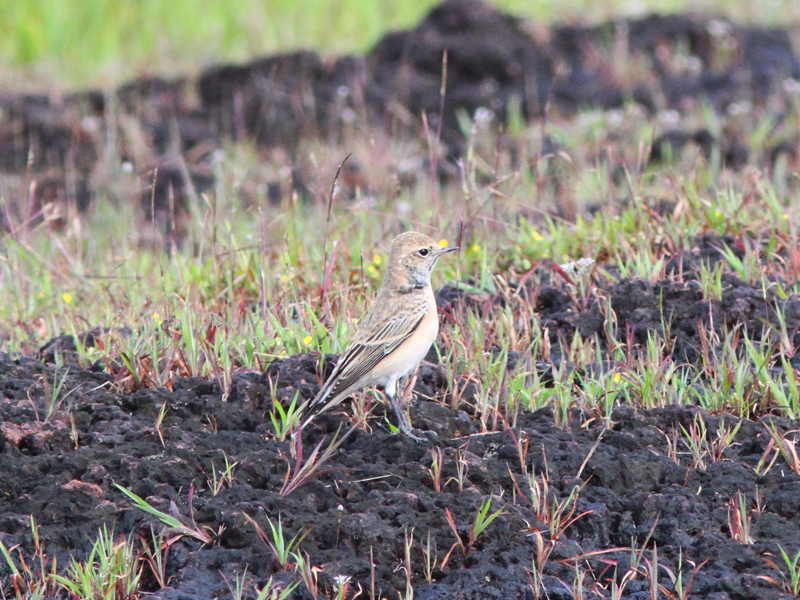The Pied Wheatear, a rare migratory bird, was spotted in Madayipara in Kannur district on September 25, 2016. This is the first time the bird is being recorded in the district and the second time in south India. It was first recorded in this part of the country when it was spotted in Kasaragod last year.
Dr. Jayan Thomas, an eye specialist from Kannur and an avid birdwatcher, sighted this insectivorous bird when he was on a routine bird watching trip on a Sunday morning.
“The Pied Wheatear is about the same size of a House Sparrow. However, the male and female birds differ in appearance. The male is boldly marked with black and white and the female is browner with a sandy buff appearance,” he says.
Wheatears are distinctive birds that are highly adapted for living in open country, including harsh desert environments and areas with scant vegetation. Though native to Southeast Europe and Western Asia, these birds can be found in Africa and Southeast Asia.
“Even though there was some confusion initially about this particular bird, because some Wheaters are similar in appearance, it was finally confirmed as the Pied Wheatear by top ornithologists C. Sashikumar and J. Praveen. A French ornithologist Alban Guillaumet also confirmed this finding. He is of the opinion that the Pied Wheatear is not completely unexpected in Kannur. He feels the bird has most probably come from East China or Mongolia and is on its way to East Africa and stopped over at Madayipara to rest and replenish its fat reserves. How often these birds come here is not properly known. This bird could be an occasional straggler or it could be visiting Kannur regularly and we could be missing it out,” says Dr. Jayan.
He added that this Pied Wheatear probably stayed here for a day and then made its trip further South towards Africa – its natural wintering ground.
As of now the population of this bird in the world is stable and there is absence of evidence of any decline or substantial threats to its habitat. Its estimated numbers are said to be between 96,000 and 420,000 in Europe.
The western coast of India is visited by many migratory birds. The hillock of Madayipara, near the Indian Naval Academy at Ezhimala witnesses plenty of migratory bird activity. In fact, Dr. Jayan found a place in the Limca Book of Records for a picture of the Buff-breasted Sandpiper, taken at Madayipara in 2014. This bird from Alaska usually goes to South America.
According to Dr. Jayan, there is a need to protect Madayipara from the excessive human activity that is taking place there these days.
Dr. Khaleel Chovva, former course director of Kannur University’s Environment Studies Department, backs this claim.
“Madayipara has to be made a community reserve to protect these passage migrants,” he says.
New buildings which have come up in the region pose a serious threat to these birds. However, Dr. Jayan feels the fencing of Madayipara has, to a certain extent, created some security for these migratory birds.








